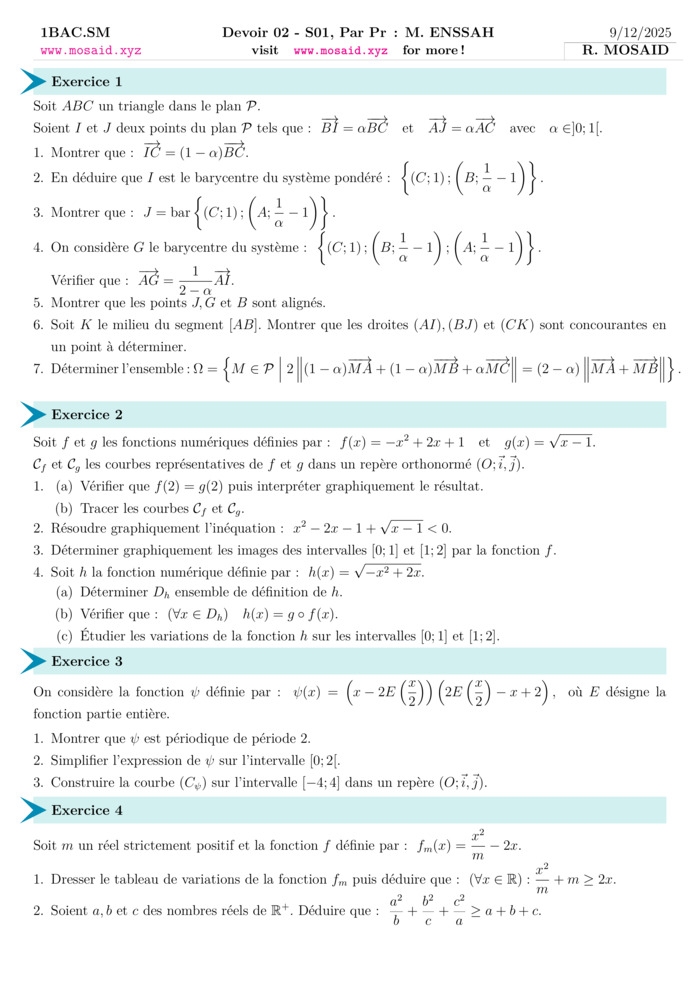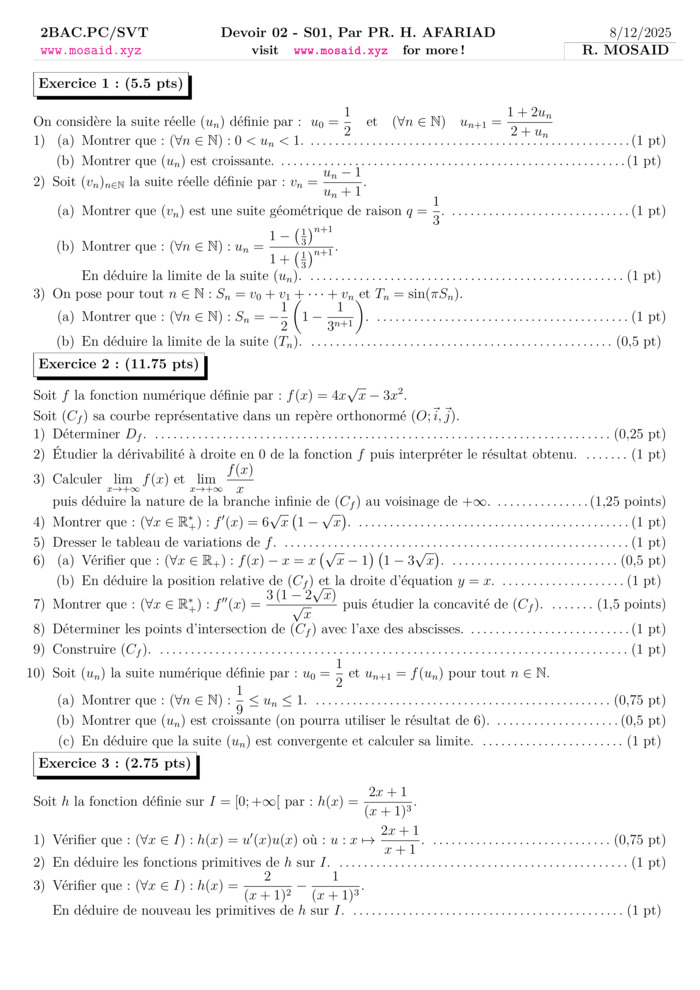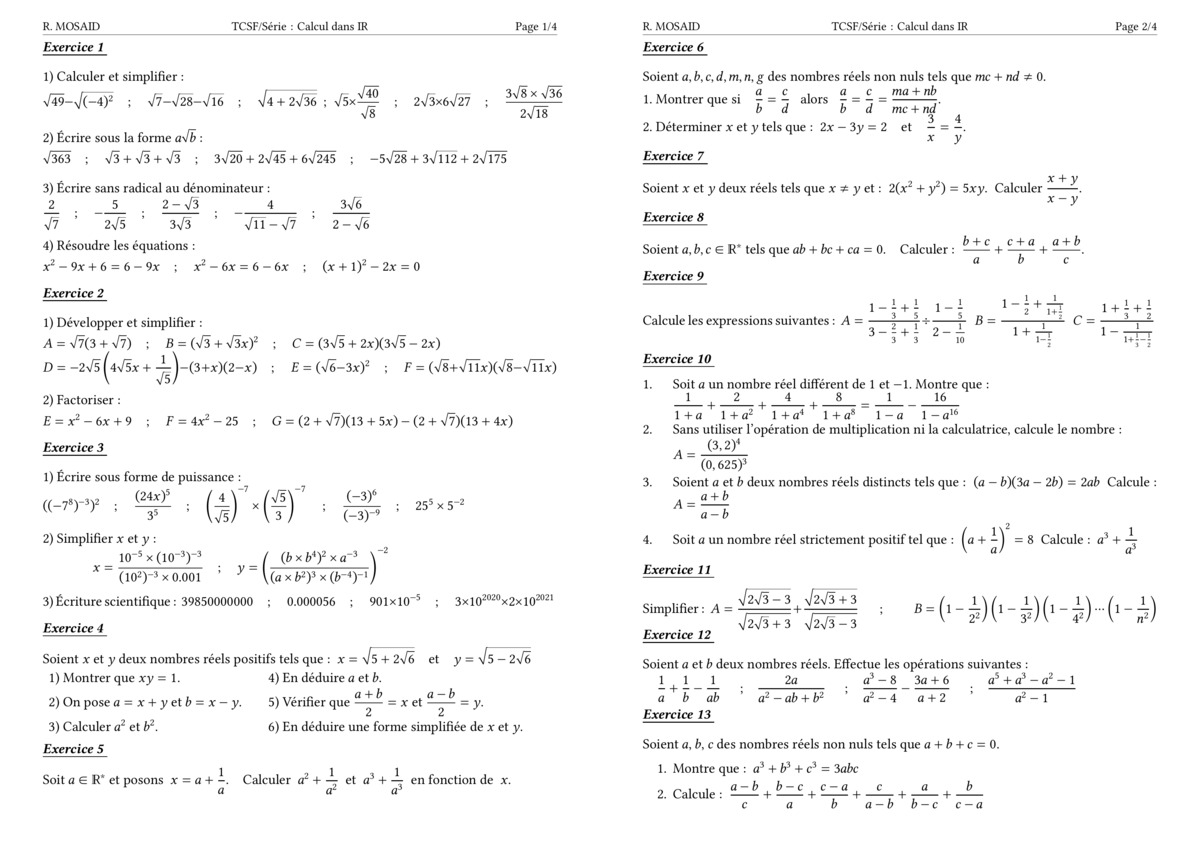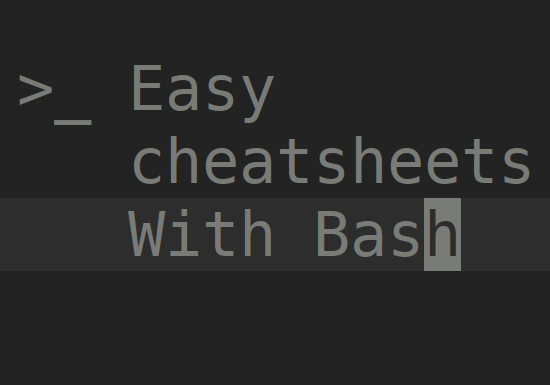Un parallèlipipède avec Latex
📅 February 10, 2024 | 👁️ Views: 94
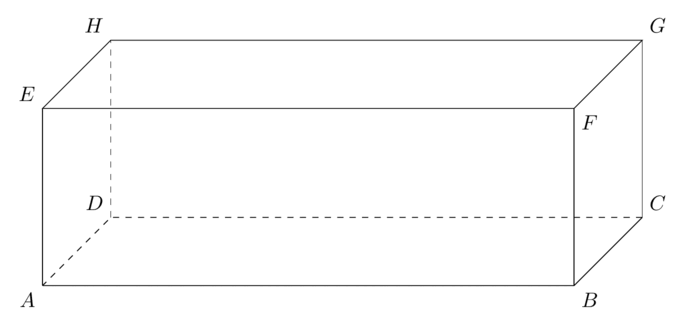
\documentclass{standalone}
\standaloneconfig{border=2mm 2mm 2mm 2mm}
\usepackage{tikz}
\begin{document}
\begin{tikzpicture}[scale=3]
% Define the vertices
\coordinate (A) at (0,0,1);
\coordinate (B) at (3,0,1);
\coordinate (C) at (3,0,0);
\coordinate (D) at (0,0,0);
\coordinate (E) at (0,1,1);
\coordinate (F) at (3,1,1);
\coordinate (G) at (3,1,0);
\coordinate (H) at (0,1,0);
% Draw the edges of the cube
\draw (A) -- (B) -- (C); \draw[dashed] (C) -- (D) -- (A);
\draw (E) -- (F) -- (G) -- (H) -- cycle; % top
\draw (A) -- (E); \draw (B) -- (F); \draw (C) -- (G); \draw[dashed] (D) -- (H); % vertical
% Label the vertices
\foreach \vertex/\position in {A/below left,B/below right,C/above right,D/above left,E/above left,
F/below right,G/above right,H/above left}
{
\fill (\vertex) node[\position] {$\vertex$};
}
\end{tikzpicture}
\end{document}
Related Courses, Exams, and Exercises
- colorer un angle (arc) Course
- Coordonnées relatives avec angles Course
- Dashed polygone with custom pattern Course
- Dashed polygone with dashed pattern Course
- Deux parallèles et une sécante Course
- draw curved lines with tikz Course
- Figure : cercle , diametre et intersections Course
- figure, circle, rectangle, axes Course
- Médiatrice et hauteur d'un triangle Course
- Squares Course
- Syntax des abreviations de coordonées dans Latex Course
- المتوسط ، الإرتفاع والمنصف Course
Course PDF:
📥 Download Un parallèlipipède avec Latex (PDF)
if you find this content helpful, Please consider supporting me with a small donation
إن وجدت هذا المحتوى مفيدا، من فضلك إدعمني بمبلغ بسيط كتبرع
Buy me a coffee — إشتر لي قهوة
PayPal.me • عبر بايبالOr bank transfer • أو حوالة بنكية
Titulaire : RADOUAN MOSAID RIB : 230 090 6501953211022000 65 IBAN : MA64 2300 9065 0195 3211 0220 0065 BIC / SWIFT : CIHMMAMC
Recent Courses
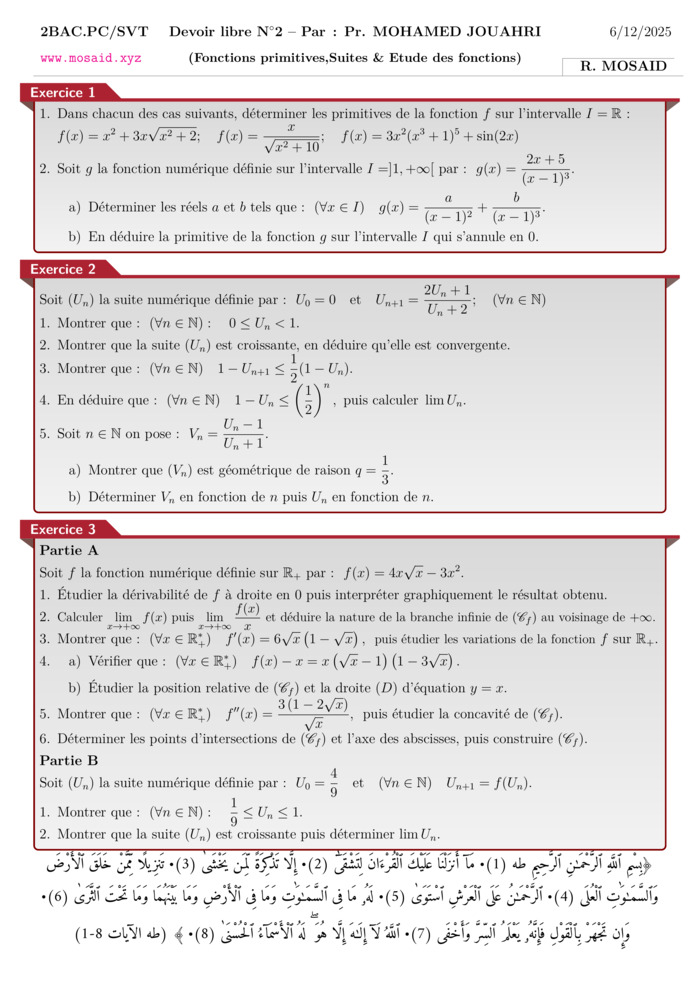
Devoir libre 02, Fonctions primitives, Suites & Etude des fonctions
09 Dec 2025
Exam • Maths • 2 Bac Science
Most Viewed Courses
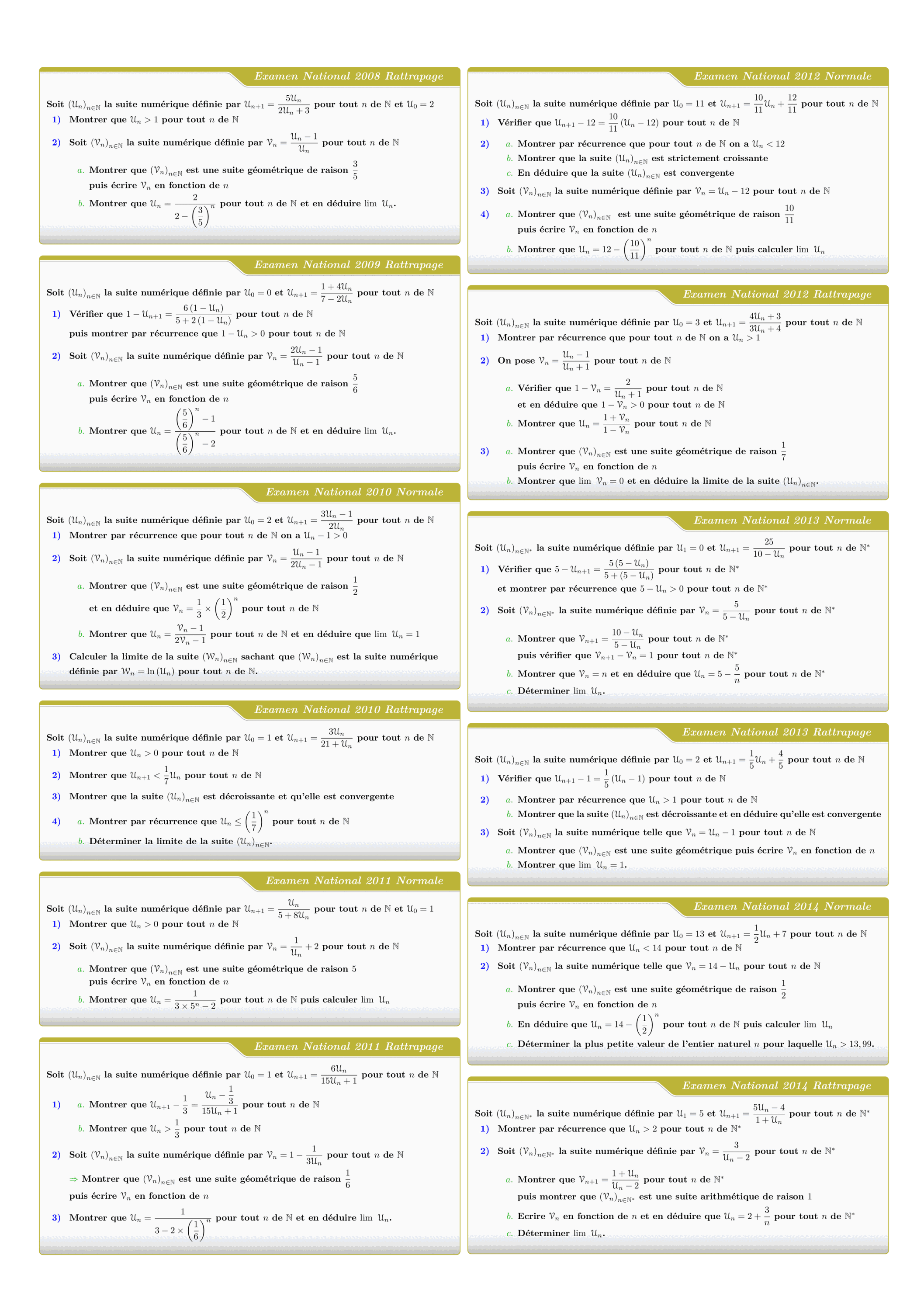
Tous les sujets des suites numériques des examens nationaux 2008 - 2022
Views: 1.77K
Exam • Maths • 2 Bac Science
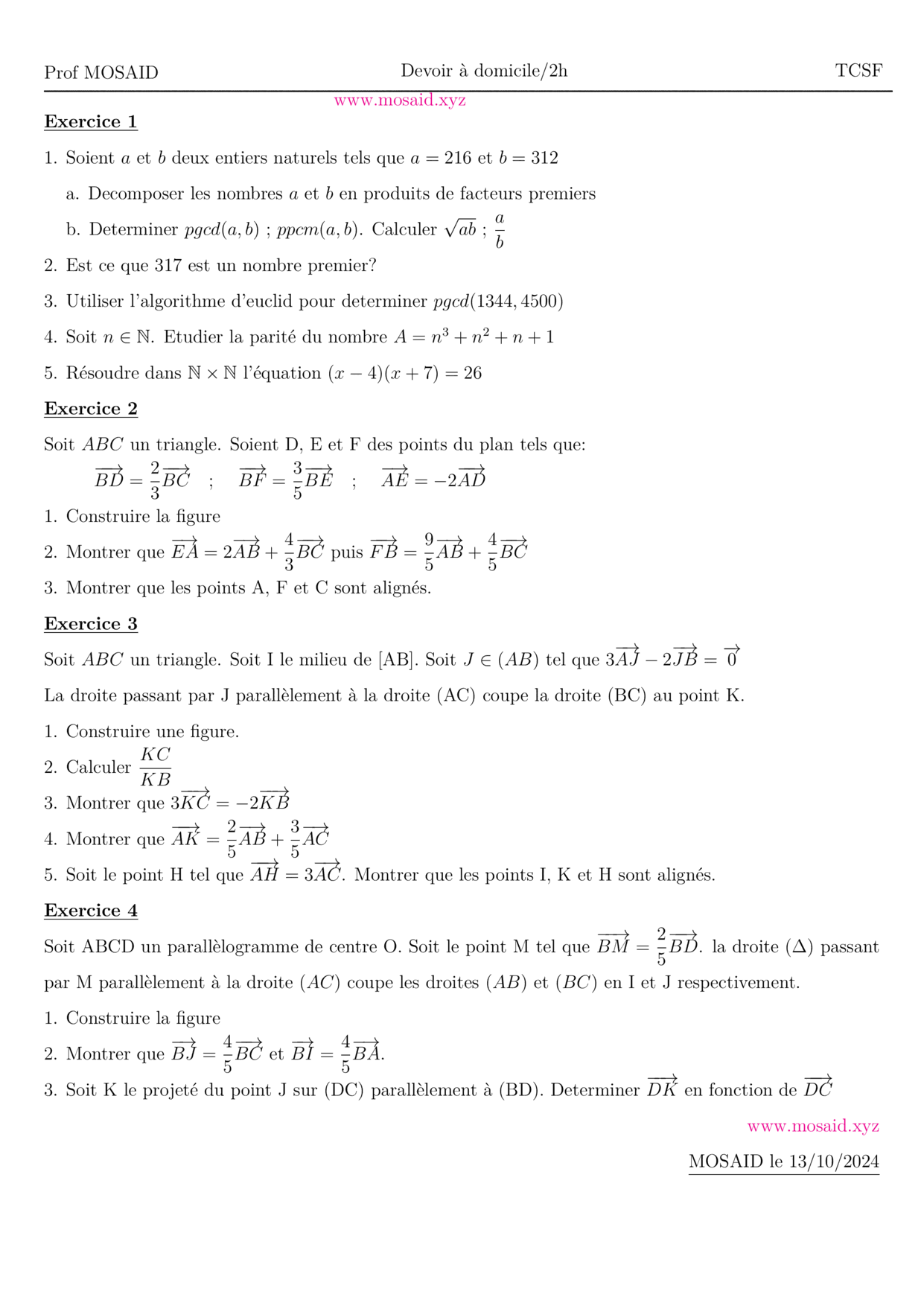
DM 1 - Arithmetiques, Calcul vectoriel et projection
Views: 1.61K
Exam • Maths • Tronc Commun Sciences
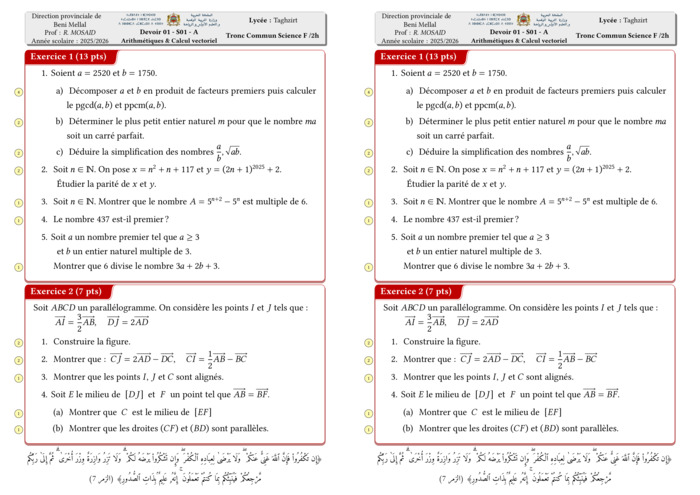
Control 01 S01 En arithmétiques et Calcul vectoriel - A 2025-2026
Views: 1.56K
Exam • Maths • Tronc Commun Sciences

MATHEMATIQUES Examens nationaux 2003-2021 2 Bac.Sciences expérimentales
Views: 1.56K
Exam • Maths • 2 Bac Science
Recent Articles

Boosting LaTeX Editing with Custom Vim Mappings
23 Nov 2025

Quran Search: A Feature rich and modern design
13 Feb 2025

